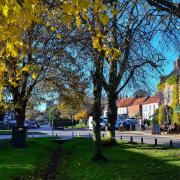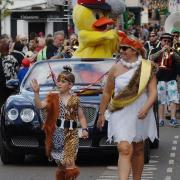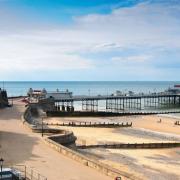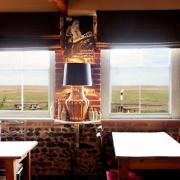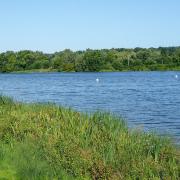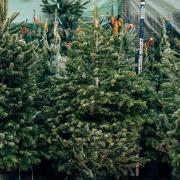An ancient castle and a massive mill are two of the highlights on this walk with Norfolk Ramblers

Directions
1 Starting at the war memorial, cross the road to the large common. Turn left then, following the path to the trees, turn right then take the path between the trees to bring you out to the road. Take Green Lane ahead passing the windmill on your left, pass the entrance to the mill, take the wide track on the left down to Grove Road, turn right; at the junction bear left then take the next left. At the bend in the road take the track towards Winter Paddocks Stud. Follow the path beside Warren Plantation; this will bring you to Banham Road.
2 Turn left, follow the road to a fingerpost on the right. Follow the field edge path to the woods, pass through to the bridge. Cross then turn right, crossing stiles till you come to Doe Lane. Pass through the gate, over the stiles then follow the field edge path behind the houses; at the end turn right out on to the road. Turn left; at the junction cross, following the footpath around the corner to the finger post.

3 If you wish to visit the castle the key can be obtained from the village store a short walk down the road. Returning to the fingerpost take the path beside the buildings; you will then see the moat and ramparts for the castle on the right. The gates are over the bridge. If not entering, follow the moat round taking the path to the right. This will bring you to Cuffers Lane. If you are returning the key, you can pick up the route by turning right out of the shop, following the road around the corner then straight on, passing the church. To rejoin at No4 follow the lane.
4 Turn left; at a sharp right turn take the path to the left. Over the stiles, follow to the road. Turn left to a track on the right then take the path to the left. Cross the bridge, turn left then right; at the paddock the path goes diagonally but there is a permissive path round the outside. Turn right by the paddock; this will bring you to the church yard. Follow the path round the church. This will bring you to the green and back to the start of the walk.
A From outside the castle you see little more than the fine moat, but if you go inside it is hard to believe the impressive earthworks and the ruins of the keep are so well hidden. New Buckenham was founded in the 12th century by William D’Albini to service his new castle at Buckenham, with a common to the east and a limited area of arable land (the Haugh field) to the south.
The town itself was planned on a grid pattern and surrounded by a substantial moat that connected it to the castle. In some places the moat was up to nine metres wide and three metres deep with an internal bank.
New Buckenham remained a market centre and was joined to Norwich by a turnpike road in 1772. However, it never grew into a larger settlement. This has meant not only that it has retained its original layout for which, according to the revised Pevsner for Norfolk, ‘it deserves to be better known’ but also that there has been very little development beyond its medieval boundaries.
New Buckenham is described as ‘a rare example of a Norman planned town that has not significantly expanded outside or shrunk within its original boundaries’. There is a wealth of half-timbered housing hiding behind 19th century brick frontages and over 60 dwellings are Grade II listed.
B Old Buckenham Windmill is a tower flour mill. It is a Grade II listed building, notable for being the largest diameter windmill in the country. The tower was built in 1818. Originally fitted with eight plain sails, it was converted to use four patent sails. Milling ceased in 1926.
The mill is normally open to the public on the second Sunday of each month from May to September.




